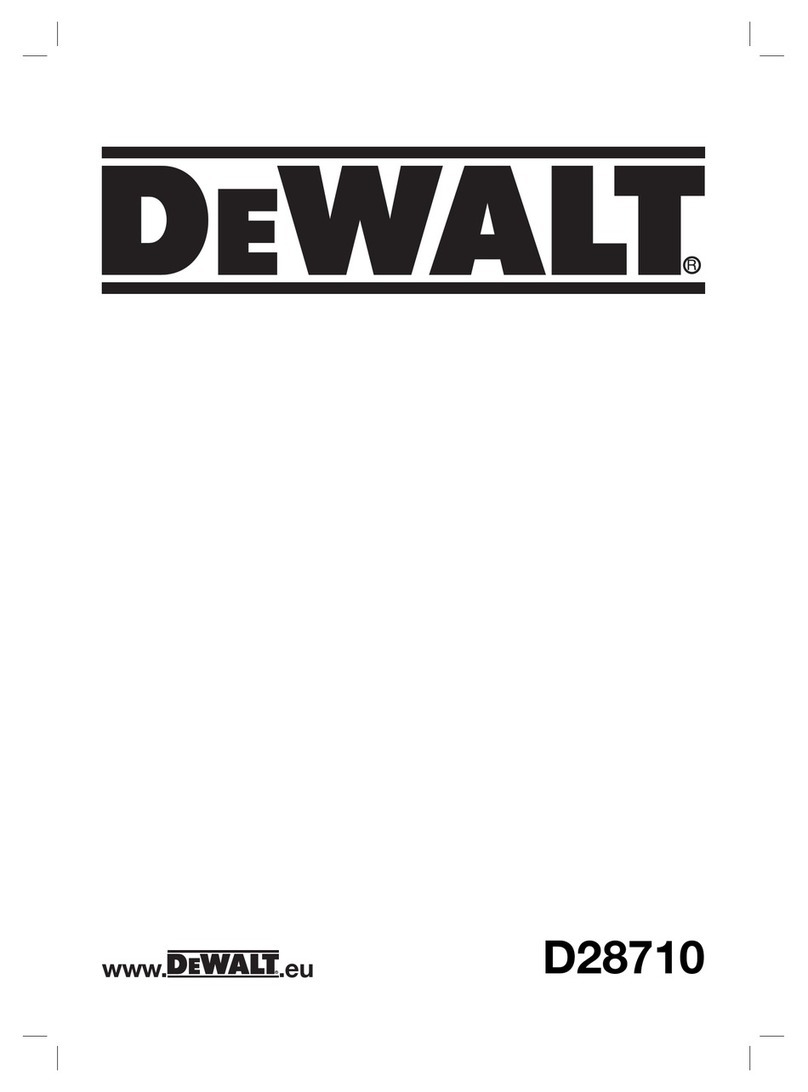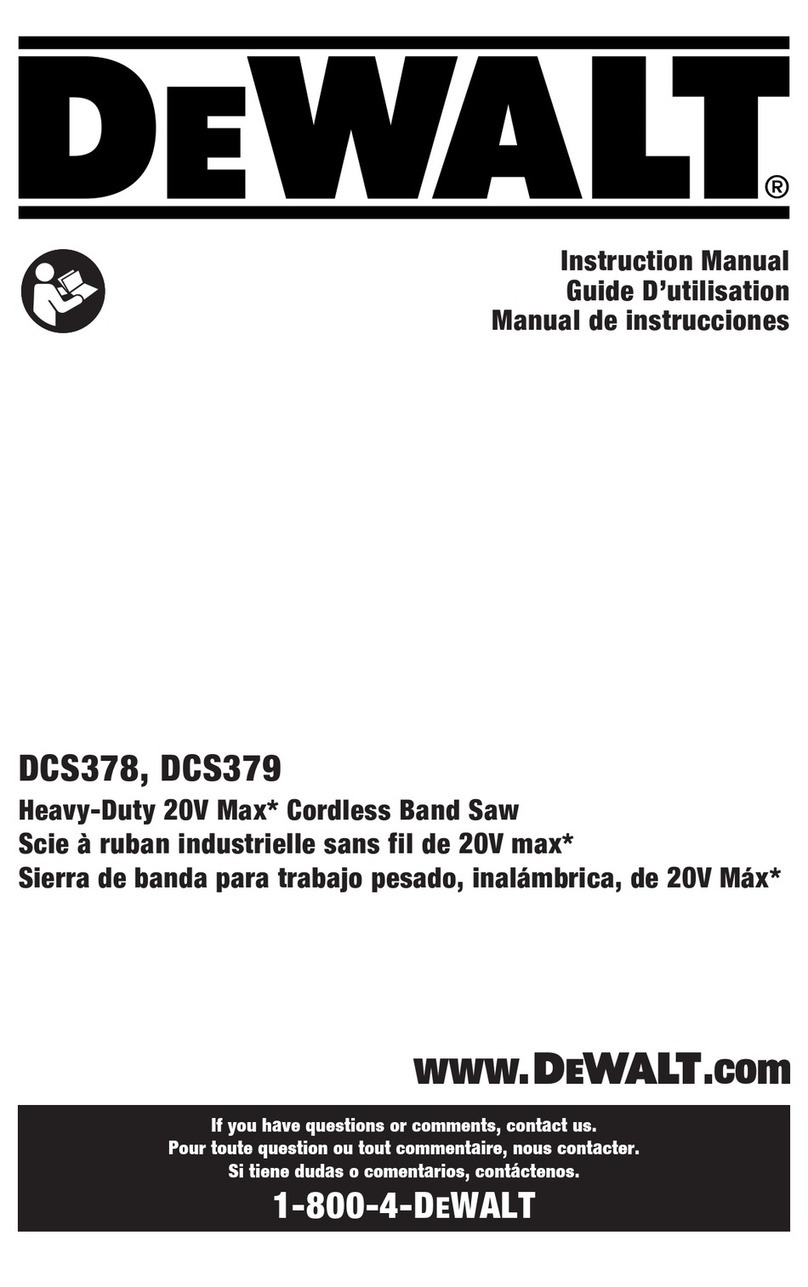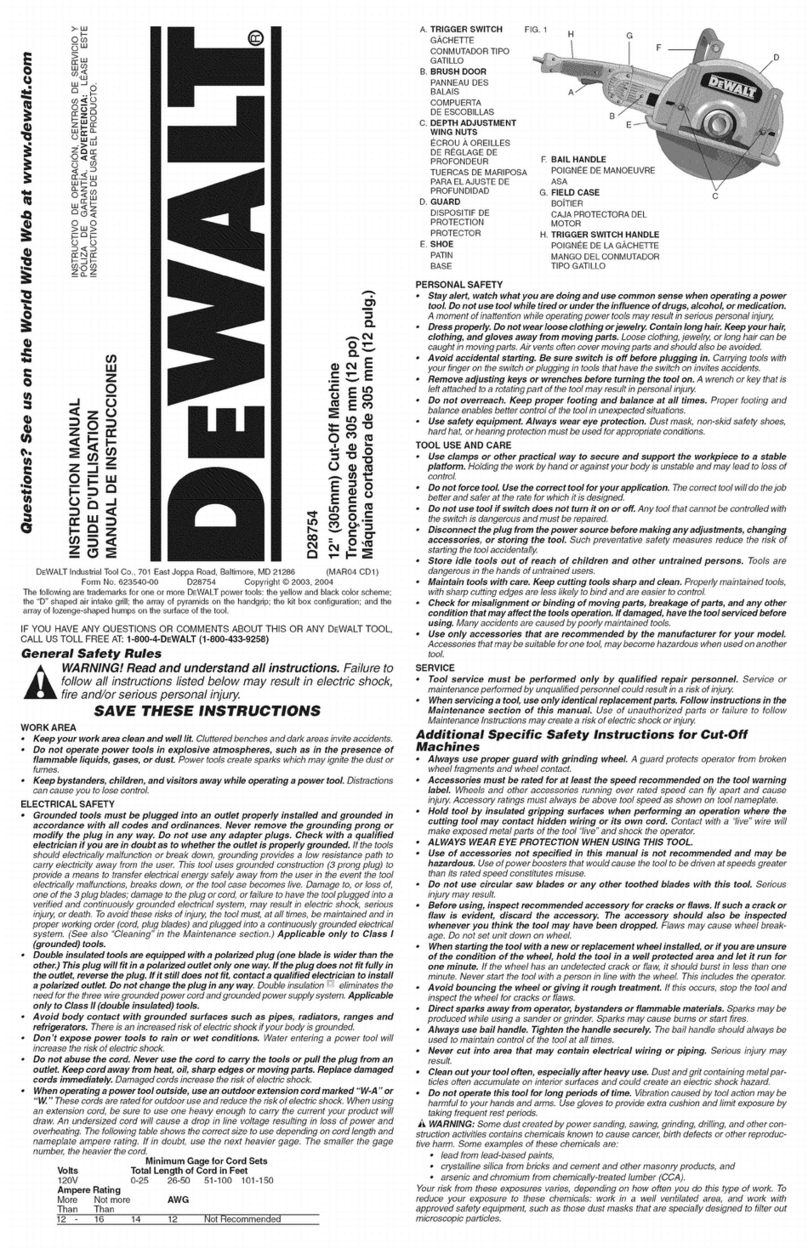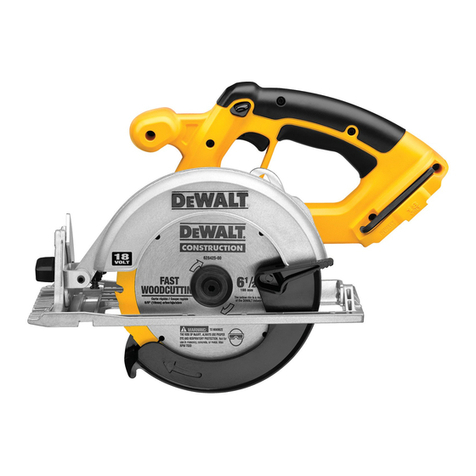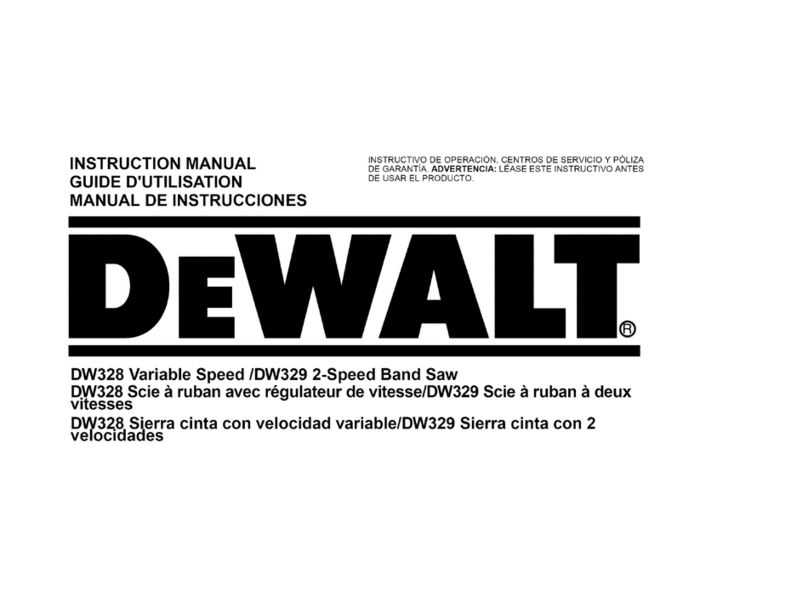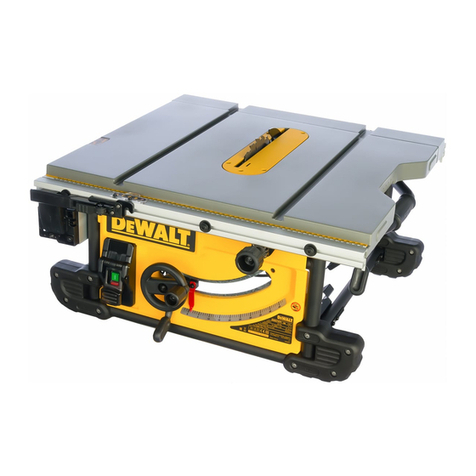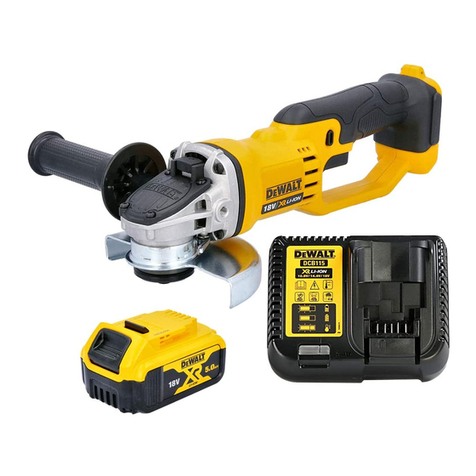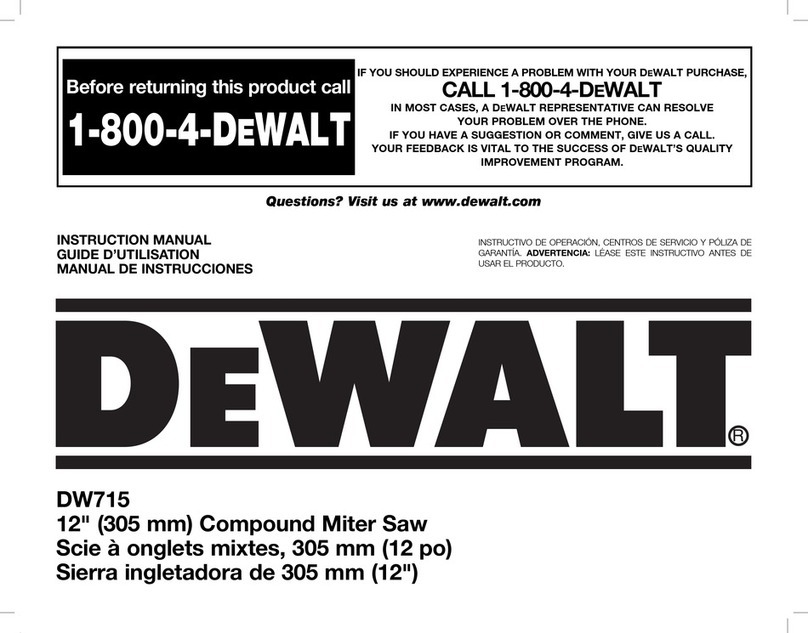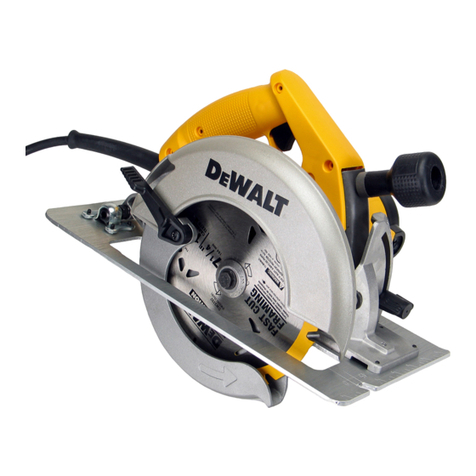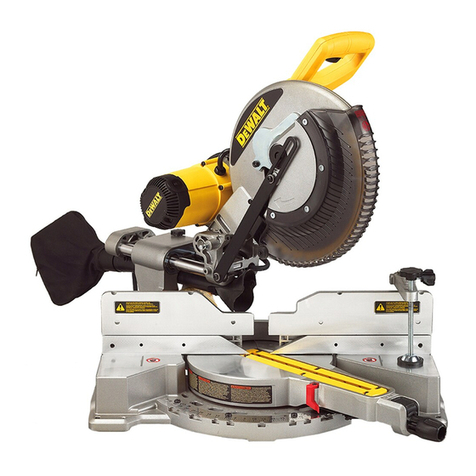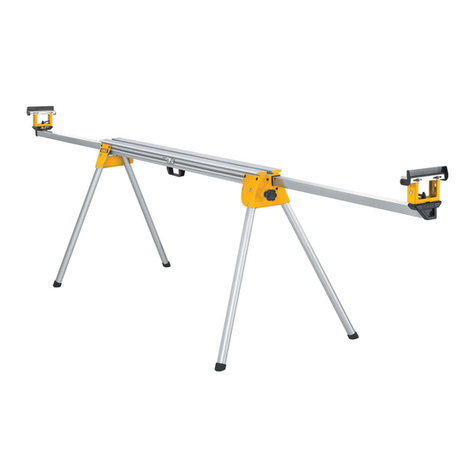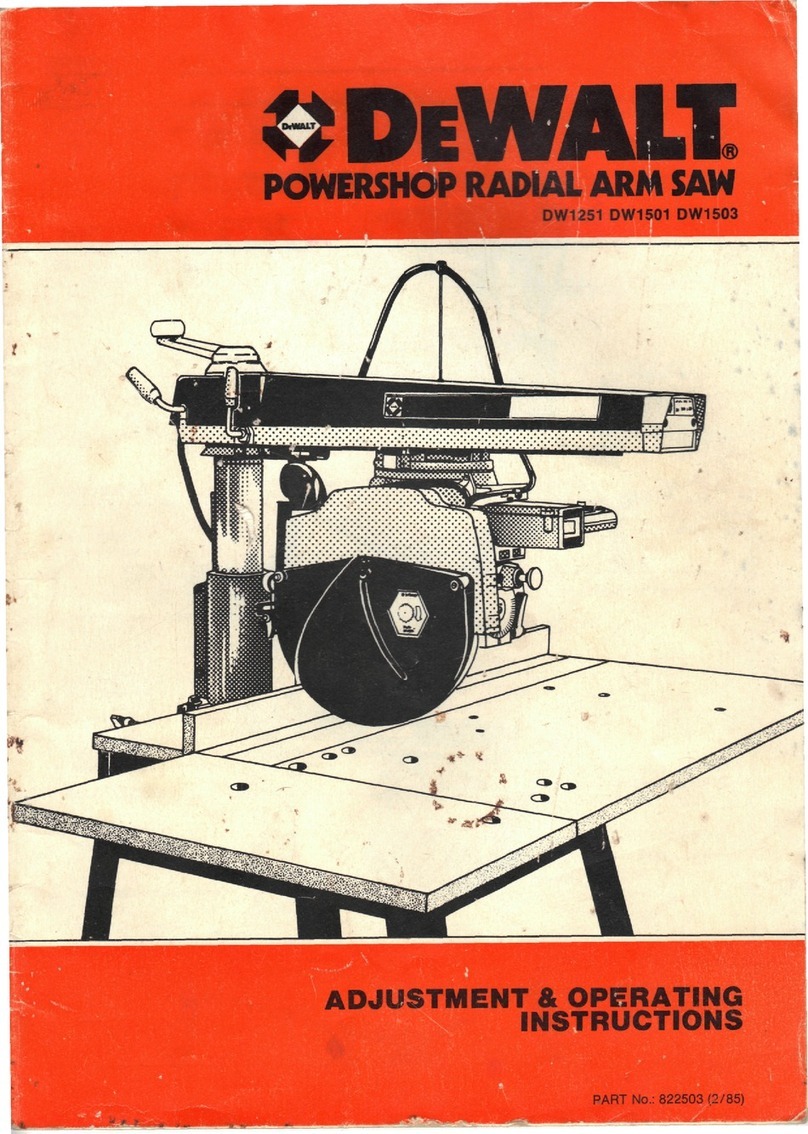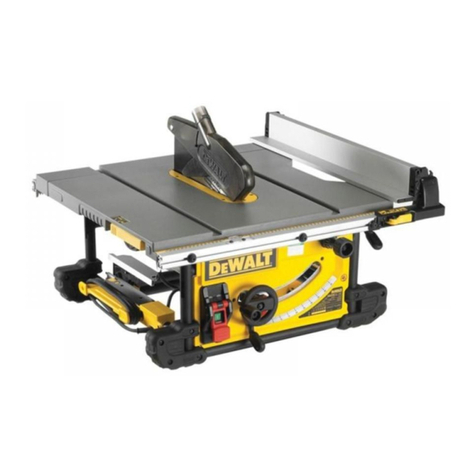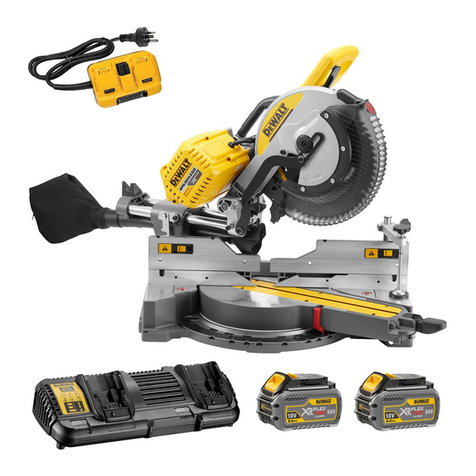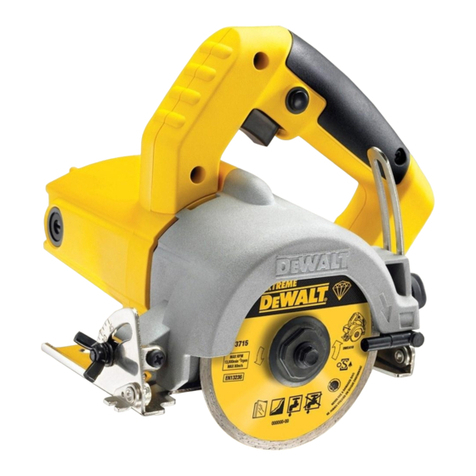
ENGLISH
4
and “compound cuts.” Raise lower guard by
retracting handle and as soon as blade enters
the material, the lower guard must be released.
For all other sawing, the lower guard should
operateautomatically.
d ) Always observe that the lower guard is covering
the blade before placing saw down on bench or
floor. An unprotected, coasting blade will cause
the saw to walk backwards, cutting whatever is
in its path. Be aware of the time it takes for the blade
to stop after switch isreleased.
Additional Specific Safety Instructions for
Circular Saws
• Use clamps or another practical way to secure and
support the workpiece to a stable platform. Holding
the work by hand or against your body leaves it unstable
and may lead to loss ofcontrol.
• Keep your body positioned to either side of the
blade, but not in line with the saw blade. KICKBACK
could cause the saw to jump backwards (see Causes and
Operator Prevention of Kickback andKICKBACK).
• Avoid cutting nails. Inspect for and remove all nails
from lumber beforecutting.
• Always make sure nothing interferes with the
movement of the lower bladeguard.
• Accessories must be rated for at least the speed
recommended on the tool warning label. Wheels and
other accessories running over rated speed can fly apart
and cause injury. Accessory ratings must always be above
tool speed as shown on toolnameplate.
• Always make sure the saw is clean beforeusing.
• Stop using this saw and have it properly serviced if any
unusual noise or abnormal operationocccurs.
• Always be sure all components are mounted properly and
securely before usingtool.
• Always handle the saw blade with care when mounting or
removing it or when removing the diamondknockout.
• Always wait until the motor has reached full speed before
starting acut.
• Always keep handles dry, clean and free of oil and grease.
Hold the tool firmly with both hands when inuse.
• Always be alert at all times, especially during repetitive,
monotonous operations. Always be sure of position of
your hands relative to theblade.
• Stay clear of end pieces that may fall after cutting off. They
may be hot, sharp and/or heavy. Serious personal injury
mayresult.
• Replace or repair damaged cords. Make sure your
extension cord is in good condition. Use only 3-wire
extension cords that have 3-prong grounding-type plugs
and 3-pole receptacles that accept the tool’splug.
Additional Safety Information
WARNING: ALWAYS use safety glasses. Everyday
eyeglasses are NOT safety glasses. Also use face or
dust mask if cutting operation is dusty. ALWAYS WEAR
CERTIFIED SAFETYEQUIPMENT:
• ANSI Z87.1 eye protection (CAN/CSA Z94.3),
• ANSI S12.6 (S3.19) hearing protection,
• NIOSH/OSHA/MSHA respiratoryprotection.
WARNING: Some dust created by power sanding,
sawing, grinding, drilling, and other construction
activities contains chemicals known to the State
of California to cause cancer, birth defects or
other reproductive harm. Some examples of these
chemicalsare:
• lead from lead-based paints,
• crystalline silica from bricks and cement and other
masonry products, and
• arsenic and chromium from chemically-
treatedlumber.
Your risk from these exposures varies, depending on how
often you do this type of work. To reduce your exposure to
these chemicals: work in a well ventilated area, and work with
approved safety equipment, such as those dust masks that are
specially designed to filter out microscopicparticles.
• Avoid prolonged contact with dust from power
sanding, sawing, grinding, drilling, and other
construction activities. Wear protective clothing and
wash exposed areas with soap and water. Allowing
dust to get into your mouth, eyes, or lay on the skin may
promote absorption of harmfulchemicals.
WARNING: Use of this tool can generate and/
or disperse dust, which may cause serious and
permanent respiratory or other injury. Always use
NIOSH/OSHA approved respiratory protection
appropriate for the dust exposure. Direct particles
away from face andbody.
WARNING: Always wear proper personal hearing
protection that conforms to ANSI S12.6 (S3.19)
during use. Under some conditions and duration
of use, noise from this product may contribute to
hearingloss.
CAUTION: When not in use, place tool on its side
on a stable surface where it will not cause a
tripping or falling hazard. Some tools with large
battery packs will stand upright on the battery pack
but may be easily knockedover.
• Air vents often cover moving parts and should be
avoided. Loose clothes, jewelry or long hair can be
caught in movingparts.
• An extension cord must have adequate wire size
(AWG or American Wire Gauge) for safety. The smaller
the gauge number of the wire, the greater the capacity
of the cable, that is, 16 gauge has more capacity than 18
gauge. An undersized cord will cause a drop in line voltage
resulting in loss of power and overheating. When using
more than one extension to make up the total length,
be sure each individual extension contains at least the
minimum wire size. The following table shows the correct
size to use depending on cord length and nameplate


